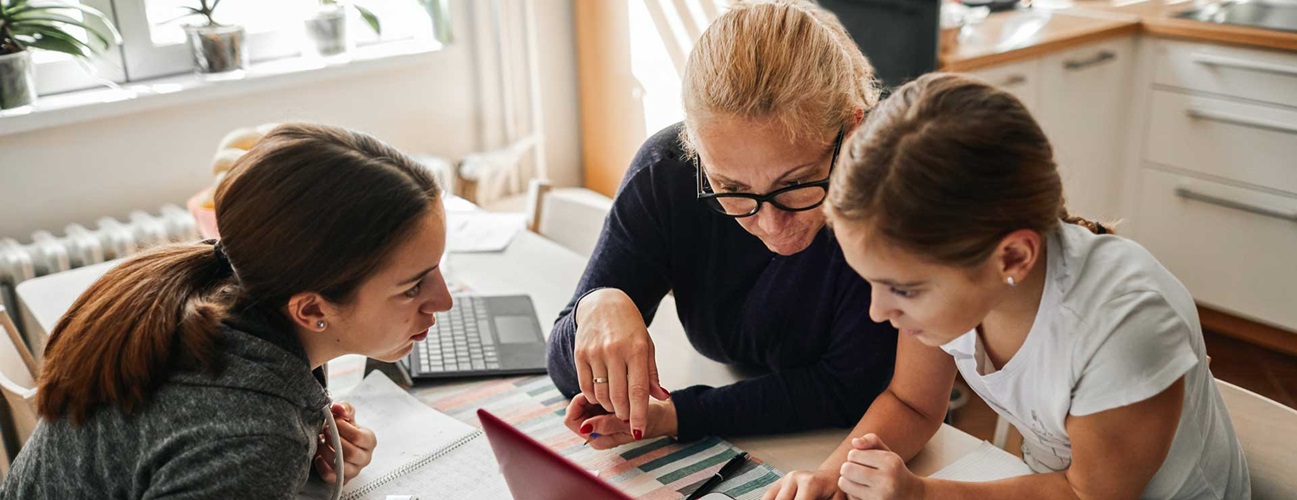Helping Your Kids Stay Focused on School During the Coronavirus Pandemic
Featured Expert:
For families navigating the challenges of the new coronavirus (COVID-19) era, it can seem a bit like a play in three acts — only in this case, all the acts are happening at once. You are a parent, you are a teacher and you are a professional — all at the same time.
Understandably, things don’t always go smoothly. The novelty of having school at home may be wearing a bit thin. So, how do we keep our kids academically engaged — and happy about it?
Kate Loguercio is a hospital-based teacher with Patient Academic Services at Johns Hopkins All Children’s Hospital. She is accustomed to teaching students outside of their normal school environment — and helping them to excel.
“School provides a sense of comfort and normalcy for many children,” says Loguercio. “This change in routine is uncomfortable and scary. But being at home provides a safe space for each child to navigate all of these new feelings, fears and challenges, to cry if they need to or grab that hug that they need — even from that busy parent.”
First: the big lessons.
Don’t shy away from talking about the “elephant in the room”
Kids know something big is happening right now. By being open and honest in developmentally appropriate ways, you’re helping to give your children the coping skills they’ll use throughout their lives.
Also, there is the matter of reading, writing and arithmetic — and so much more to be learned and discovered.
Keep your child’s day structured
Loguercio says you can set your child up for success with a modest amount of structure and an appealing learning environment.
“Get ready for the day just as you would for school,” Loguercio says. “Prepare lunch and snacks ahead of time. You can even include those sweet notes for your kiddos.”
5 Tips Kids Need to Know about Covid-19
Make learning fun
Set up a “classroom” workspace and make it fun! For older kids, you can spice things up by having them move to different rooms in the house for different subjects or “class periods.”
Accept that your child’s learning will look very different right now, and that teachers are learning, too, as they work to adapt their classrooms as quickly as possible. Create a question board, and don’t hesitate to contact teachers as needed during office hours with any questions you have.
Keep your child focused when learning at home
Here are more tips and ideas from hospital teachers on how you can help your child stay focused and learn happily:
- Have each child create a personal goal that he or she would like to accomplish by the end of the school year — something they normally wouldn’t have time for, but now they do! Work on the goal daily/weekly.
- Keep things fresh. Allow your children to explore their creativity and what interests them.
- Use everyday occurrences as opportunities for learning — chances to teach valuable life skills.
- Create a question, quote or riddle of the day.
- Take it outside! Work on homework or conduct classes on the front porch or in the backyard to get some fresh air. Completing math problems? Bust out that sidewalk chalk.
- Need something to do? Read! Start a book club in your household.
- Stay connected. Your child can set up a virtual “study hall” with classmates and friends. Set aside X amount of minutes to catch up socially, and the remainder to focus on homework/classwork.
- Work together with other classroom families to create a virtual yearbook.
- Plan a celebration for the end of the school year. Invite friends to join online.
Finally, allowing yourself and your loved ones some extra flexibility as you move through the day is encouraged. After all, we are charting new territory.
“It’s OK to break away from your normal schedule or your kids’ normal schedule,” Loguercio says, “if it will help everyone accomplish their tasks.”








